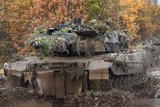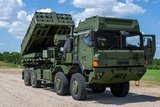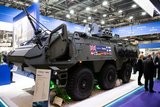Ricardo to stage DARPA FANG vehicle challenge
Ricardo has announced that it has been selected by the United States Defence Advanced Research Projects Agency (DARPA) to stage the FANG Challenge, a series of three competitions designed to produce the Fast, Adaptable, Next-Generation Ground (FANG) vehicle. FANG will be a new heavy, amphibious infantry fighting vehicle with functional requirements intended to mirror the US Marine Corps' Amphibious Combat Vehicle (ACV).
According to Ricardo, the FANG Challenge represents a ‘radically novel approach’ to the development of a new infantry fighting vehicle. It will use a crowd-sourcing model to produce revolutionary ideas through three prize-based design competitions, which require participants to design and develop progressively more complex vehicle subsystems, culminating in the design of a full infantry fighting vehicle (IFV). The winning crowd-sourced design will be eligible for consideration as the go-forward design for the ACV programme.
Ricardo has selected a team of world-class organizations to support it in the development and execution of the FANG Challenge, including The Quell Group, Comet, Georgia Institute of Technology's Aerospace Systems Design Laboratory (ASDL), Vanderbilt University's Institute for Software Integrated Systems (ISIS), and Southwest Research Institute.
The FANG Challenge is expected to begin in early 2013. Additional information on the FANG Challenge and how individuals can participate in the competitions, along with eligibility, will be announced by DARPA at a later date.
More from Land Warfare
-
![Hungary set to begin using Hero 400 loitering munitions]()
Hungary set to begin using Hero 400 loitering munitions
Developed by Israel's Uvision and with systems being sold in the thousands to multiple European NATO countries and the US, the Hero family of loitering systems is also in production in the US and Italy, the latter through Rheinmetall.
-
![Lockheed Martin to look further afield for GMARS rocket system opportunities]()
Lockheed Martin to look further afield for GMARS rocket system opportunities
The HX truck is already in use in many NATO and allied countries around the world as a logistics vehicle and carrier for high-value systems, including missile firing weapons, so its use for the Global Mobile Artillery Rocket System makes logistical sense.
-
Medium knocked out of British Army LMP, with CAVS as heavyweight champion
As the British Army seeks to modernise and consolidate its diverse vehicle fleet, yet another change in direction is underway.























